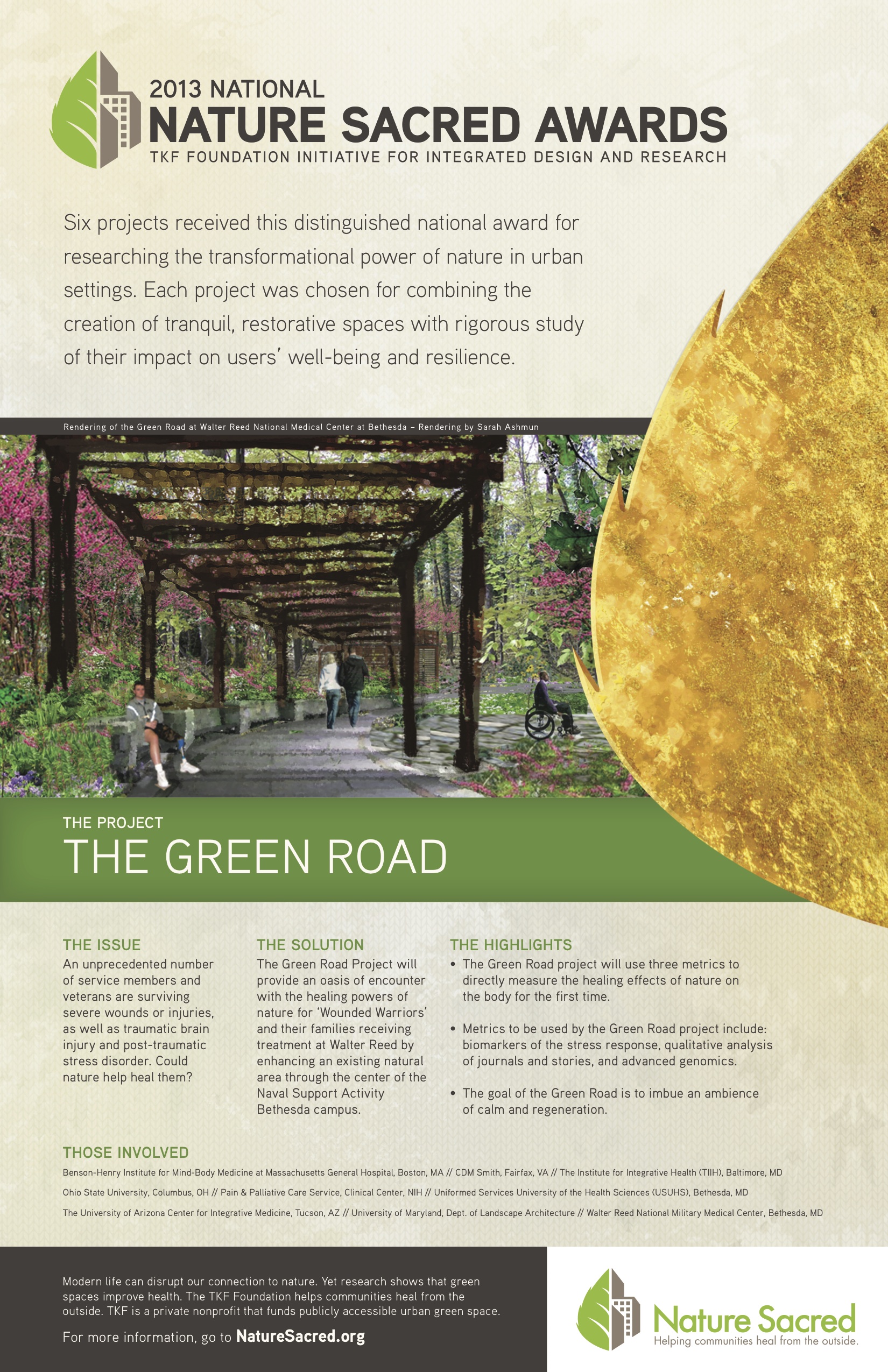 Six projects received this distinguished national award for researching the transformational power of nature in urban settings. Each project was chosen for combining the creation of tranquil, restorative spaces with rigorous study of their impact on users’ well-being and resilience. See the full list of projects here. Print version of poster. More The Green Road team member interviews: Dr. Brian Berman
Six projects received this distinguished national award for researching the transformational power of nature in urban settings. Each project was chosen for combining the creation of tranquil, restorative spaces with rigorous study of their impact on users’ well-being and resilience. See the full list of projects here. Print version of poster. More The Green Road team member interviews: Dr. Brian Berman
The changing nature of warfare — combined with ever-increasing health knowledge — led the military to realize in the past few years that many of the men and women returning home from the wars in Iraq and Afghanistan were hurting in new ways.
Some had traumatic brain injuries. Others suffered from post-traumatic stress disorder, or PTSD. Dr. Fred Foote (CAPT, MC, USN, Ret.) says that when you take these “unseen” injuries into account, the casualty rate could be as high as 40 percent.
The traditional approaches to health and wellness simply weren’t enough. Foote said the answer is a “holistic” path that works to heal the whole person — an approach that emphasizes patient-centered care, healing buildings, nature, art and spirituality.
“These are all treatments whose time has come,” said Foote, a retired naval neurologist who’s become an expert in holistic healing.
With funding from the National Open Spaces Sacred Places Awards Initiative, the Institute for Integrative Health, where Foote is a Scholar, is developing The Green Road Project at Naval Support Activity Bethesda, home of Walter Reed National Military Medical Center. Built on a woodland section of the campus, it will surround ‘Wounded Warriors’ and their families with the healing powers of nature in an oasis of respite—and combine a healing, patient-centered approach with rigorous data on what works to improve the health of veterans.
The project will include commemorative and communal pavilions, a streambed restoration for Stony Creek and a wheelchair-accessible path — which will be especially important for the soldiers living in the area’s approximately 400 long-term living units, many of whom are amputees facing long, painful recoveries. The Navy already realized it needed such a path to help patients navigate the campus, so the military will build the path while the Open Spaces award will fund the garden. The timing of the award was almost perfect, Foote said, noting that “all the stars lined up.”
Just as important as giving currently injured service members a place to heal is determining a thorough, science-based set of proven tactics for how to improve treatments for patients down the line. The Green Road Project will also enable rigorous research using special metrics to measure the impact of the space on veterans’ recovery.
In 2010, the “Epidaurus 2” Project was launched with the goal of identifying metrics to directly assess the whole-body effects of holistic care. The original Epidaurus Project helped the military health system identify the principles that define patient-center care and how that care could be embodied in or facilitated by the built environment. The result of part two was a list of five metrics to help assess and measure how a patient’s “whole person” changes as they become healthier.
Foote said the Green Road project will utilize three of the metrics: combined biomarkers of the stress response; qualitative analysis of journals and stories using natural language processing; and advanced genomics.
Said Foote: “You can’t measure easily a whole body transition from illness to wellness…but it is possible.”
“It’s using advanced informatics to chart the mind,” he said. “By bringing them together at the Green Road we’ll learn about which [healing elements] work best and where.”
